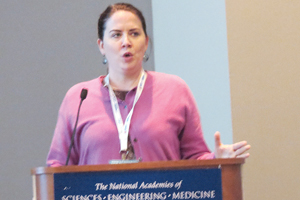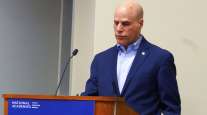Experts Say Lack of Public Understanding Complicates Urban Freight Movement

WASHINGTON — The disconnect between the government agencies that regulate freight and the companies that move it in ever-increasing volumes throughout the United States was a focus of a Transportation Research Board session on Jan. 9.
“Public officials don’t have an adequate understanding of freight operations or business drivers: why that warehouse is suddenly showing up in their community or why isn’t that intermodal facility coming to the community when they know that there’s a real economic benefit?” said panelist Chris Steele of Investment Consulting Associates in Newton, Massachusetts. “[Many] communities don’t have the zoning or land use regulations. They don’t have the transportation planning in place. So companies are very often dropping communities that would otherwise be good locations.”
Steele also noted that agencies within government such as DOTs and planning departments don’t communicate well with each other either.
Professor Alison Conway of the City College of New York studies the last mile, and even the final 50 feet, or freight movement, a process that is fraught with headaches in today’s urban environments.
“Our population trends are reversing; our cities are growing,” Conway explained. “We’re trying to achieve all these different priorities: public safety and health, economic vitality, environmental sustainability, livability. That’s a pretty tall order to meet all of those goals.”
Conway said the online marketplace’s rapid growth has meant that consumers are increasingly demanding what they want when they want it — which brings more, if smaller, delivery trucks into residential areas at all hours. Complicating matters are dedicated bicycle and bus lanes which prohibit those trucks from using that prized curbside real estates.
“We have to find a way to make these things work together,” Conway said. “When we design a bike lane, we’ve got to make sure that we think about where’s the truck that needs to make that delivery going to park? We can set up time-specific management to vary use of the curb. E-commerce totally revolutionized the way that goods move.”
Peter Plumeau, a former federal and local official who’s now with Resource Systems Group in Burlington, Vermont, said that freight is too often overlooked during the public planning investment process.
“The FAST Act has all these great new [requirements], but if you look at regional metropolitan plans and urban plans, freight is kind of an afterthought,” Plumeau said. “The public and freight-industry perspectives don’t always align.”
However, Plumeau praised the freight and logistics sectors for adapting adeptly to regulatory challenges, citing American Trucking Associations’ ride-alongs with commercial drivers for educating government officials about the challenges they face on a daily basis.




